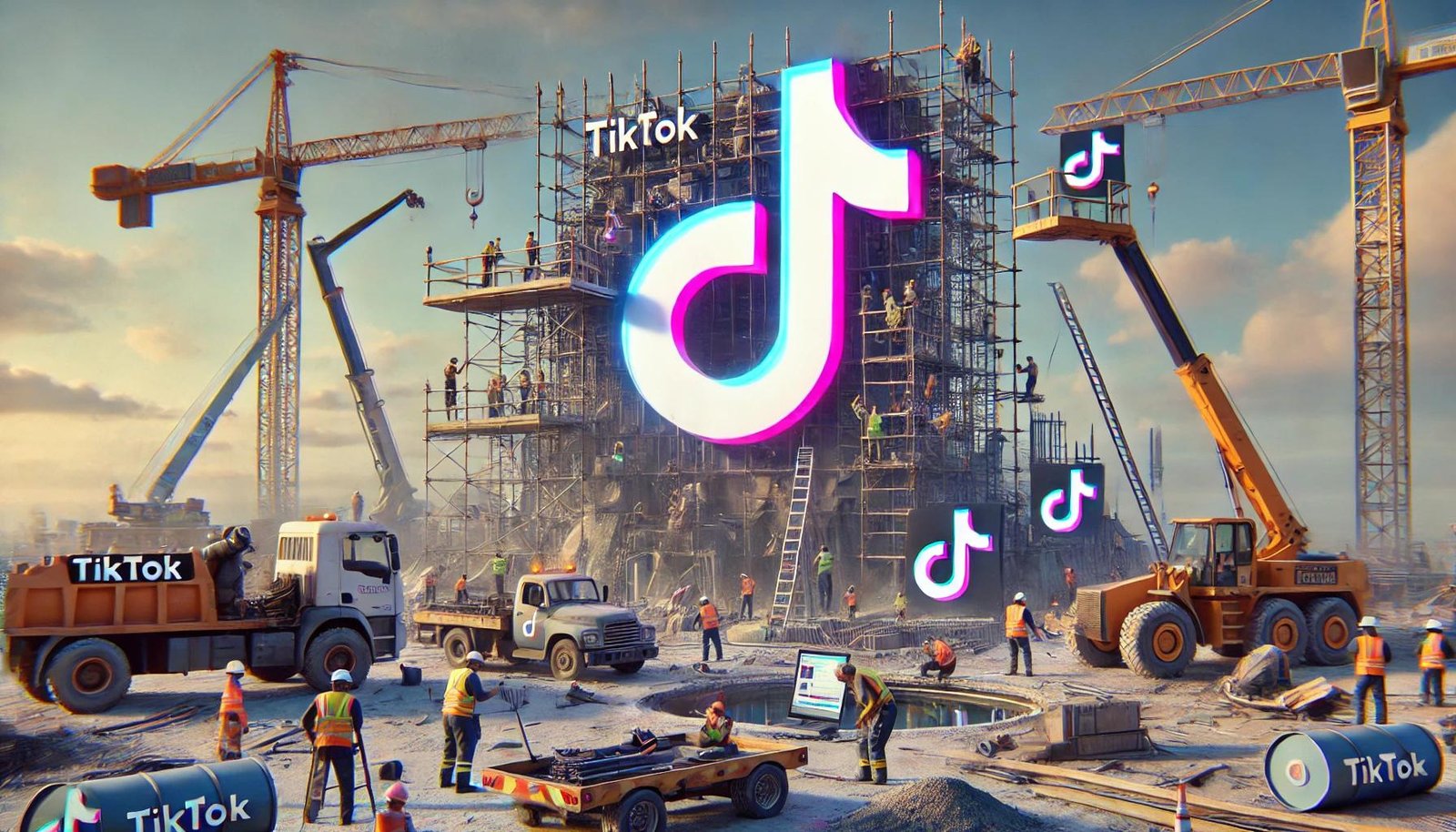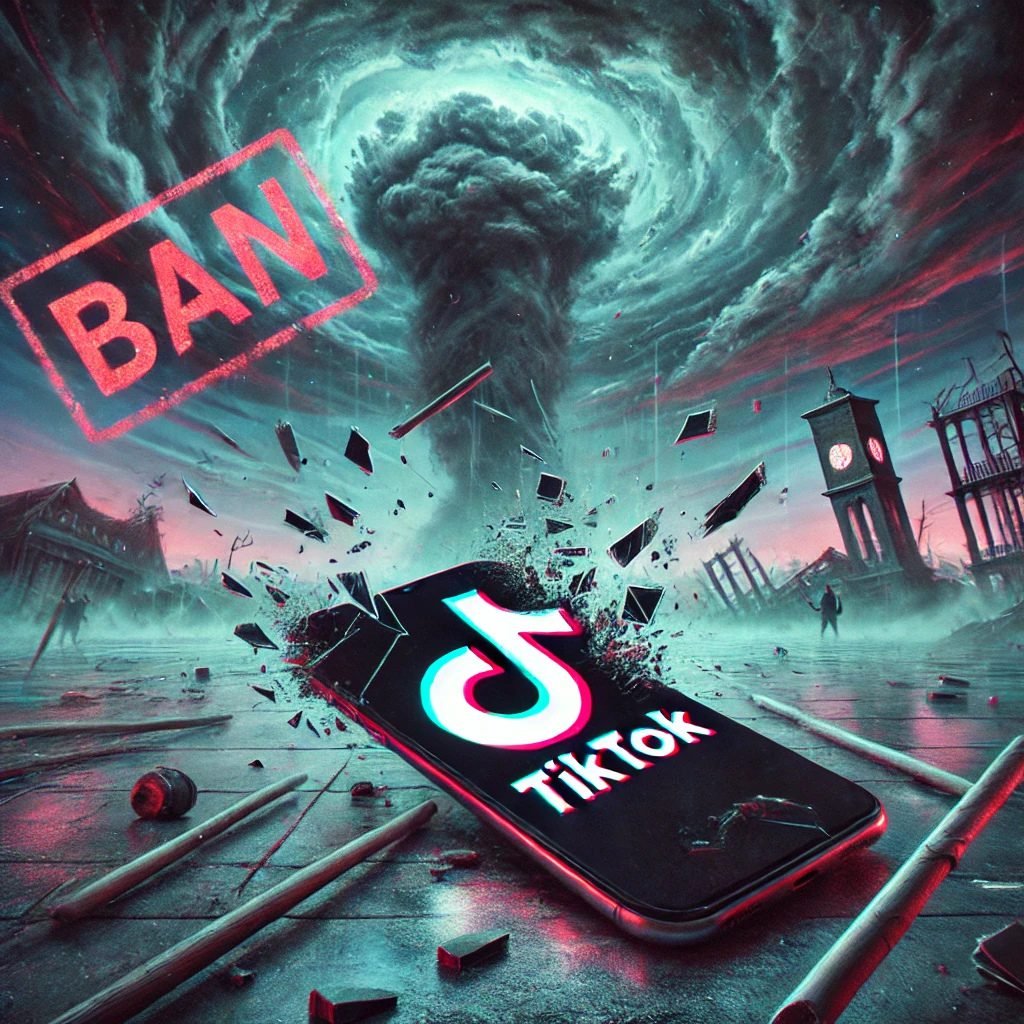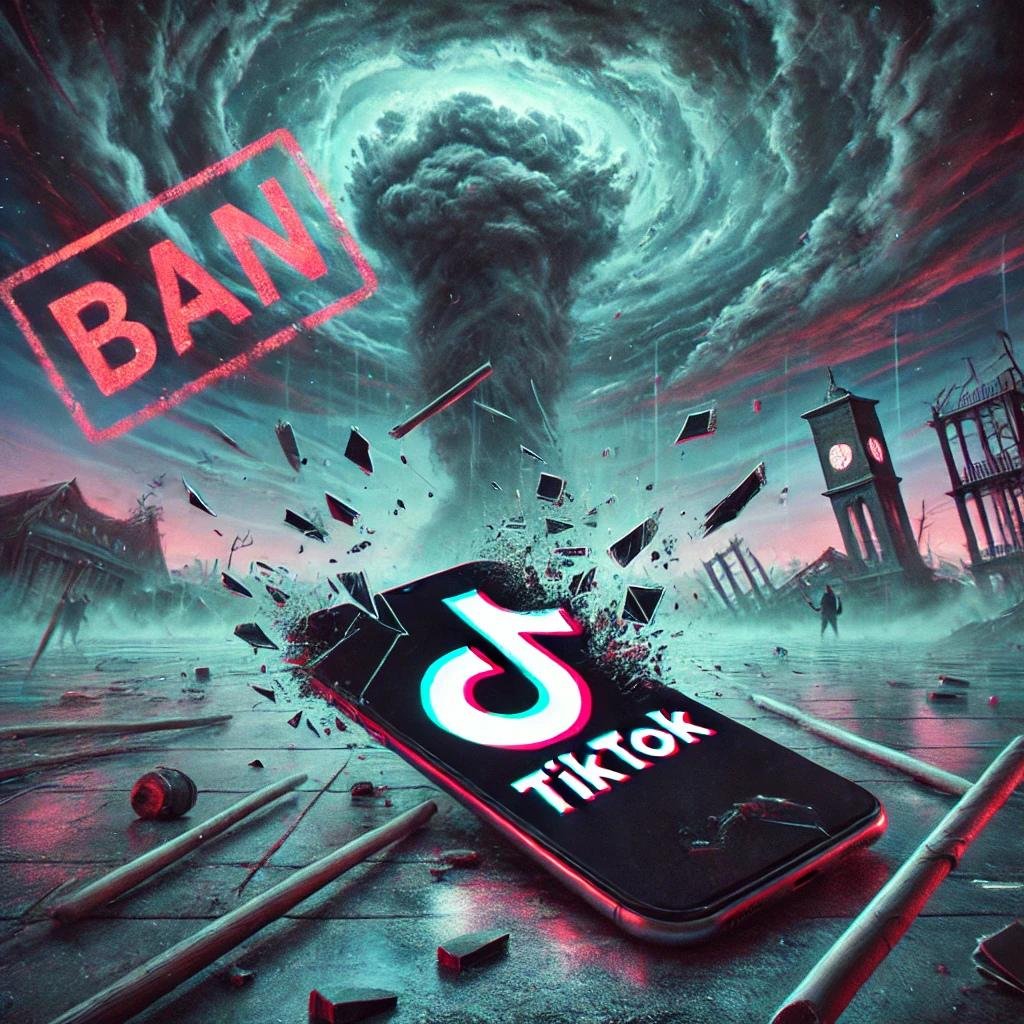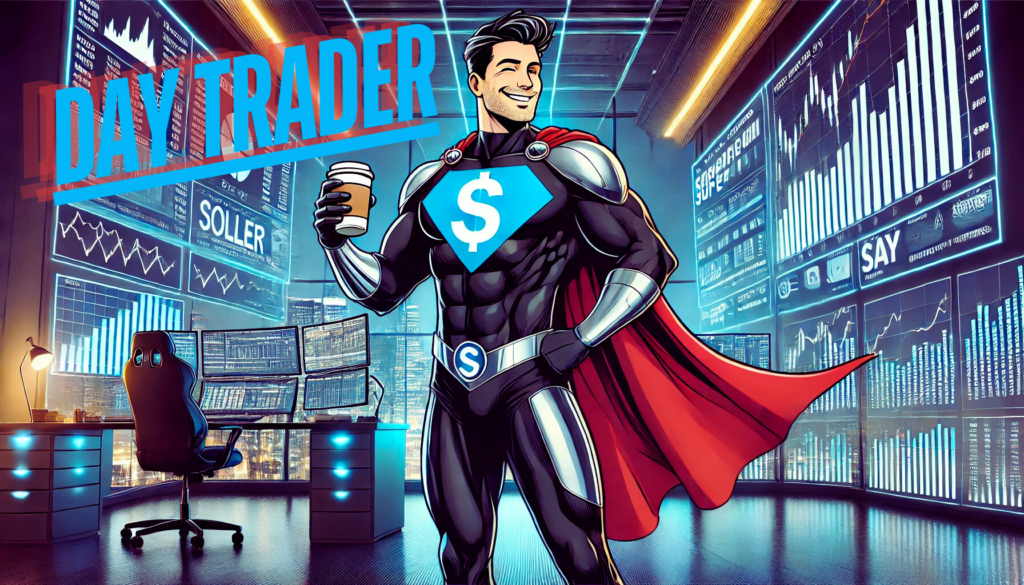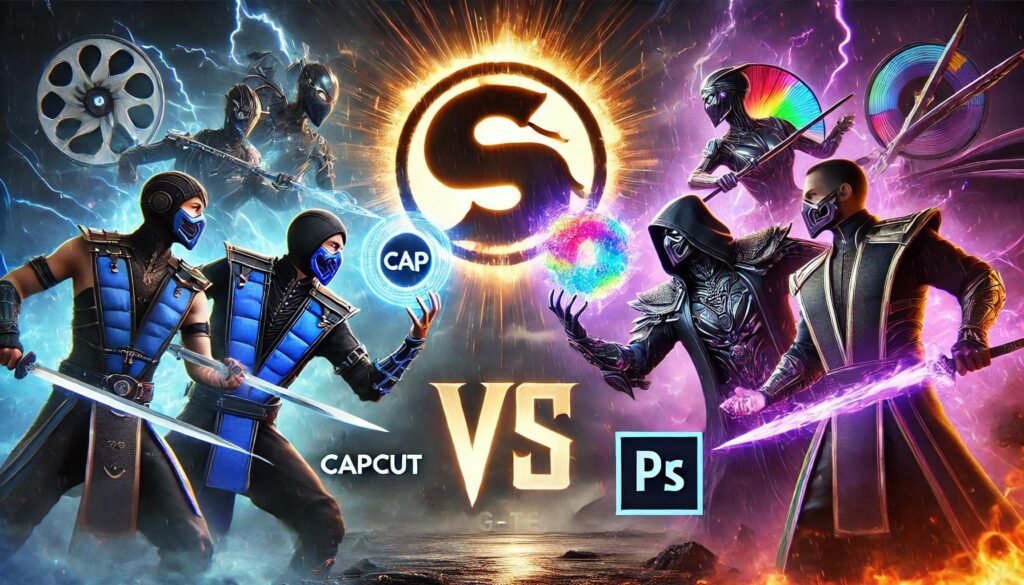Contents
Y’know, I woke up this morning, fresh out of sleep, sat up in my bed and opened it dude… Just to see. Maybe, just maybe, it really wasn’t real, but No. No funny dances, no recipes you’ll never cook, no relatable memes about hating Mondays. TikTok’s gone. Straight up banned. And not just TikTok—Lemon8 and CapCut are down with it, dragged into the same mess like collateral damage. It’s not just an app anymore; it’s a whole era that’s been wiped out while we were sleeping.
I don’t know about you, but that hit hard. It’s like someone walked into our digital playground, turned off the lights, and locked the gates. And for what? Censorship? “Spyware concerns”? National security? They tell us it’s about protecting our data, but let’s not pretend we haven’t all been giving up our souls to Facebook and Instagram for years. TikTok got singled out because it was different. It wasn’t just another social media platform—it was a movement, a cultural phenomenon, and, honestly, a way of life for so many of us.
Think about what this actually means. TikTok’s been around since 2016. That’s almost a decade of content, creativity, and connection gone in the blink of an eye. I’m not talking about just cringy dances and funny cat videos (although RIP to those, too). I’m talking about the real, raw stuff: creators building entire careers, small businesses finding customers they never would’ve reached, and people like you and me sharing ideas, venting, educating, and connecting in ways we never could before. And now? It’s just… poof.
You know what really gets me, though? It’s not just about the content or the creators—it’s about the control. TikTok wasn’t just a fun app; it was where we told the stories. It was our news, our culture, our voice. When something big happened in the world, you didn’t need to wait for CNN or Fox to give you the polished, corporate version. TikTok was there, raw and real. It was peer-to-peer news. Regular people with smartphones became journalists, educators, entertainers, and activists. And now, that’s gone too.
Let’s not forget the little siblings in this mess—Lemon8 and CapCut. Lemon8? Poor thing didn’t even get a fair shot. It was like a Pinterest-Instagram hybrid for the aesthetically obsessed, and now it’s gone before most people even got to hear about it. And CapCut? Dude, that one hurts. CapCut wasn’t even just for TikTok—it was a go-to editing tool for creators on Reels, YouTube Shorts, and more. I just paid for premium, and now it’s toast? Like, seriously, what did CapCut do to deserve this?
So here we are. Apps banned. Content erased. Careers disrupted. And the big question looms: Why? Why target TikTok and ByteDance? Is this really about spyware, or is it something deeper? And most importantly, where do we go from here? I’ve got some ideas, and trust me, we’re going to dig into every angle. But first, let’s take a moment to appreciate what we just lost, because it’s bigger than most people realize.
This isn’t just about losing an app—it’s about losing a platform that changed the game, a stage where everyone had a chance to shine. And yeah, it sucks. But if there’s one thing we know about creators, it’s that we adapt. We rebuild. And if TikTok taught us anything, it’s that we can turn any moment—no matter how messy—into a movement. Let’s figure out the next move, together.
The Rise and Fall of TikTok
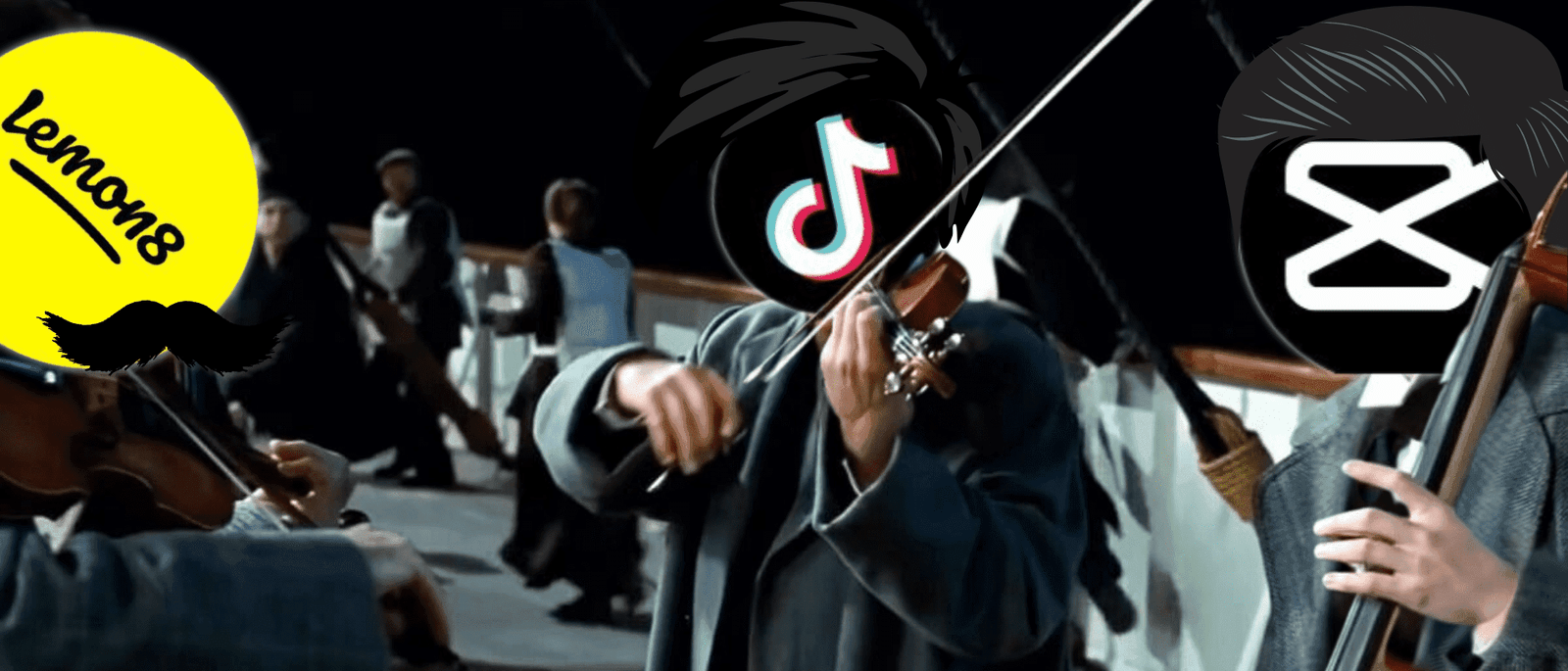 Let’s talk about TikTok—how it went from a quirky lip-syncing app called Musical.ly to becoming the cultural juggernaut it was before, well… this mess. I mean, TikTok didn’t just appear—it exploded. By 2018, after ByteDance merged it with Musical.ly, it took over our screens, and before we knew it, everyone and their grandma was scrolling, creating, and trying to hit that viral sweet spot. Seriously, how many times did you hear, “Bro, just one more TikTok before bed,” and then boom—3 a.m.?
Let’s talk about TikTok—how it went from a quirky lip-syncing app called Musical.ly to becoming the cultural juggernaut it was before, well… this mess. I mean, TikTok didn’t just appear—it exploded. By 2018, after ByteDance merged it with Musical.ly, it took over our screens, and before we knew it, everyone and their grandma was scrolling, creating, and trying to hit that viral sweet spot. Seriously, how many times did you hear, “Bro, just one more TikTok before bed,” and then boom—3 a.m.?
But TikTok wasn’t just about the funny dances or “how to make a pasta dish in 3 minutes” videos (although let’s be real, those were fire). No, TikTok was something bigger. It was different. It felt raw, real, and random—you could go from laughing at a Karen meltdown to watching someone break down quantum physics in less than a minute. TikTok didn’t care if you had 5 followers or 5 million; if your video slapped, you could go viral. It gave everyone a chance, and that’s what made it special. It was our stage, and the algorithm was our hype crew.
- The Algorithm That Changed Everything: Let’s get real—TikTok’s For You Page (FYP) was chef’s kiss. It was scary good at figuring out what you liked. Paused on a cat video? Get ready for a flood of fluffy felines. Accidentally stayed on a conspiracy video too long? Welcome to the rabbit hole, friend. No other platform could keep you hooked like TikTok, and that’s why people spent hours on it every day.
- From Trends to Movements: TikTok wasn’t just about entertainment; it shaped culture. Think about all the trends it birthed—from dances like the Renegade to massive movements like #BlackLivesMatter and #FreeBritney. TikTok wasn’t afraid to go there—it gave people a platform to speak out, whether it was political, social, or just venting about your 9-to-5. It was our voice, unfiltered and unapologetic.
- Careers Were Made Here: TikTok wasn’t just an app; it was a career launcher. People who’d never had a shot on Instagram or YouTube were suddenly blowing up, landing brand deals, and building businesses. Whether you were selling handmade jewelry or becoming a full-blown influencer, TikTok made it happen. It wasn’t polished like Instagram or clout-heavy like YouTube—it felt real.
And now? That empire’s been wiped out like a sandcastle hit by a wave. Why? Because it was too powerful. Governments don’t like a platform where they can’t control the narrative. TikTok didn’t just disrupt social media—it disrupted power structures. It made the average person’s voice louder than the politicians or media moguls who usually dominate the conversation. And that? That was its downfall.
TikTok went from being the underdog app that nobody took seriously to the most talked-about platform in the world. It gave us creativity, community, and a whole new way to connect. And now, it’s gone. Just like that. RIP, you beautiful, chaotic beast. But don’t worry—we’re not done yet. Let’s talk about why this actually happened, and trust me, it’s deeper than just “spyware concerns.”
Why the Ban Happened
Alright, so let’s get into it—why did they really ban TikTok? They’ll tell you it’s about “national security” and “protecting your data,” but come on, do we really believe that? The U.S. government acting like it suddenly cares about our privacy is like Facebook pretending they don’t sell your data to the highest bidder. Cough, hypocritical much?
But TikTok wasn’t just any app—it was a powerful, disruptive force. It wasn’t just about dances and memes; it was about control. Governments hate losing control, and TikTok represented everything they couldn’t regulate, censor, or spin to fit their agenda. Let’s unpack the official reasons versus the stuff they’re not saying out loud.
The Official Story: Spyware Concerns
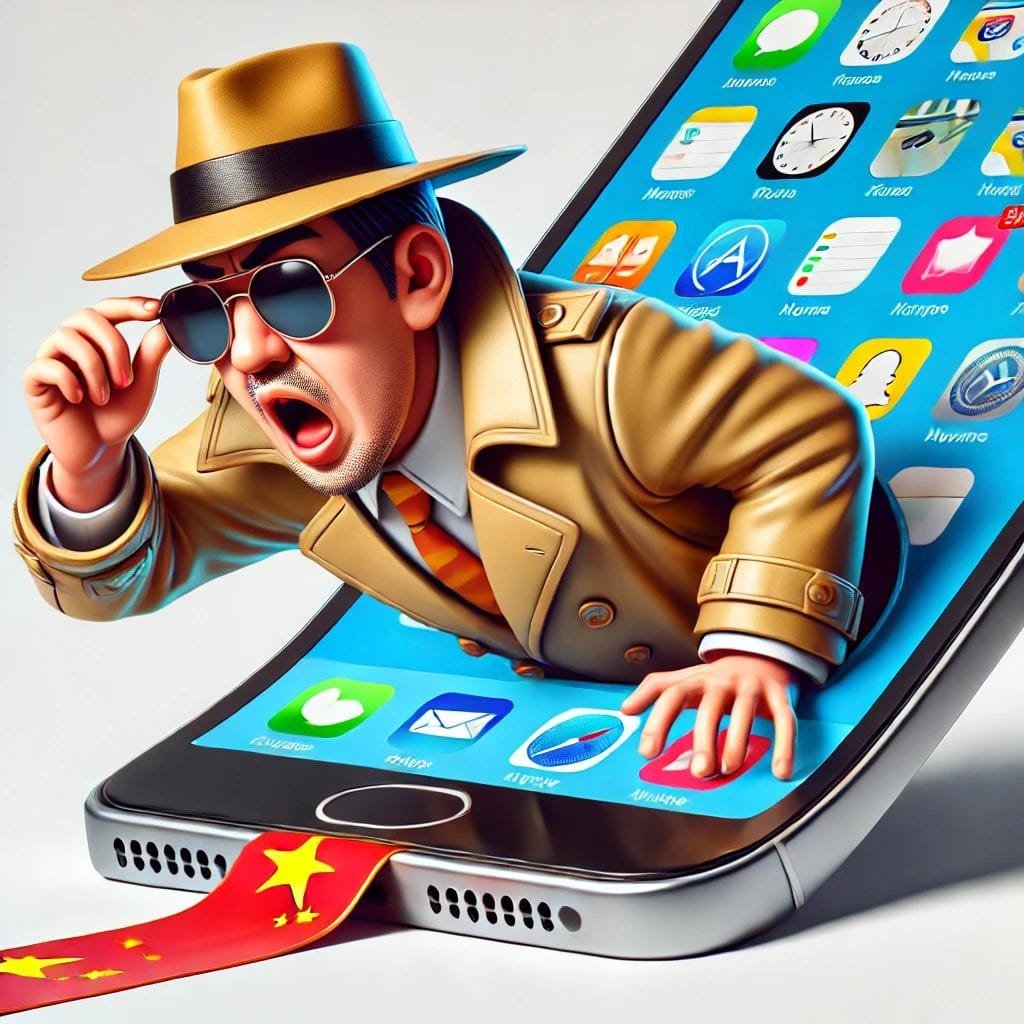 The main reason you’ll hear is that TikTok is “spyware” and that its parent company, ByteDance, could share user data with the Chinese government. Is there some truth to that? Sure. ByteDance operates out of China, where laws like the National Intelligence Law mean the government can demand access to company data. That freaked a lot of people out—imagine the Chinese government knowing your location, contacts, or even what memes you’re laughing at. Creepy, right?
The main reason you’ll hear is that TikTok is “spyware” and that its parent company, ByteDance, could share user data with the Chinese government. Is there some truth to that? Sure. ByteDance operates out of China, where laws like the National Intelligence Law mean the government can demand access to company data. That freaked a lot of people out—imagine the Chinese government knowing your location, contacts, or even what memes you’re laughing at. Creepy, right?
But here’s the thing: TikTok wasn’t collecting anything more invasive than what Facebook, Instagram, or Google already grab. Seriously, if you’ve got those apps on your phone, your data’s already been passed around like a hot potato. So why the hyperfocus on TikTok? That’s where the real story begins.
The Real Story: Fear of Power
TikTok wasn’t just a data collection app; it was a cultural powerhouse. It was a megaphone for the average person, and governments hate that. Remember when TikTok users sabotaged Trump’s Tulsa rally in 2020 by reserving tickets they had no intention of using? Or how the app amplified movements like #BlackLivesMatter or exposed corruption in real time? TikTok gave people a platform to organize, speak out, and share unfiltered, peer-to-peer news—and that made governments uncomfortable.
Think about it: traditional media outlets and social platforms like Facebook have filters. They’re run by corporations, and those corporations have interests (read: they play ball with governments). TikTok? It was chaotic, decentralized, and too fast to control. Something happened in the world, and boom—it was on your For You Page within minutes. That’s a level of transparency and power that made people in high places nervous.
Geopolitics and Tech Wars
And then there’s the bigger picture: this ban wasn’t just about TikTok. It’s part of a tech war between the U.S. and China. TikTok wasn’t just a social media app; it was backed by some of the most advanced AI technology in the world. Its algorithm was lightyears ahead of anything Silicon Valley had cooked up, and the U.S. didn’t like playing second fiddle.
By banning TikTok, the U.S. is sending a message: “We’re not letting China dominate tech, data, or AI.” It’s not just about user data—it’s about who controls the future of technology. And if you think this stops with TikTok, think again. This is just the beginning.
Censorship in Disguise?
Here’s the scariest part: what if this isn’t really about China? What if this is just an excuse to set a precedent for shutting down platforms that governments can’t control? Today it’s TikTok. Tomorrow, it could be something else—something that isn’t owned by a foreign entity but still gives people too much power to organize and share information.
Let’s not forget, this isn’t the first time governments have tried to control social platforms. From banning political posts to throttling reach on certain topics, they’ve been inching toward censorship for years. TikTok was just harder to control, and now they’ve found a way to take it down.
So yeah, they say it’s about spyware and protecting our privacy, but let’s be real: this is about power, control, and fear of disruption. TikTok was a threat—not just to user data but to traditional media, governments, and the entire way information flows in the digital age. And now, they’ve silenced it. But the question is: at what cost? Let’s dig into what we’ve actually lost because it’s bigger than just an app.
The Domino Effect: Lemon8 and CapCut
Alright, so TikTok’s ban was the headline, but what about Lemon8 and CapCut? These two apps didn’t even stand a chance—they got yeeted off the playing field just because they shared the same parent company, ByteDance. And let me tell you, that’s like punishing the little siblings for the trouble the older one caused. Let’s break it down because this part of the story is just as wild and unfair.
Lemon8: The App That Never Got a Chance
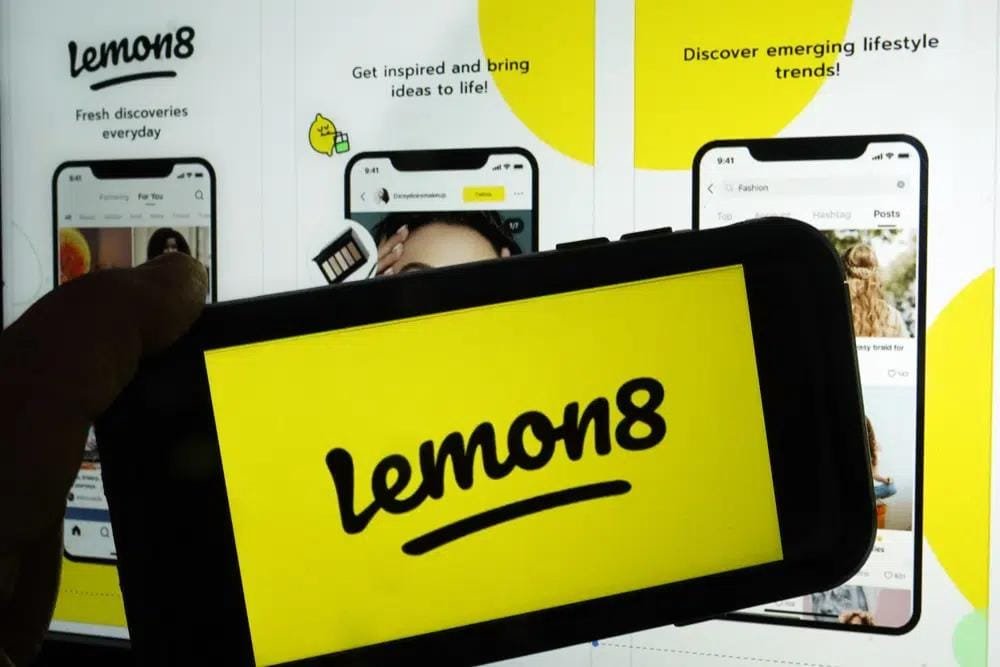 Okay, so Lemon8 wasn’t even a household name yet, and now it’s probably doomed to be that “what-could-have-been” app in the ByteDance family. For those who didn’t get to check it out before it got nuked, Lemon8 was a mashup of Pinterest and Instagram. It had all the aesthetic, vibe-heavy energy of mood boards but with a social twist—think outfit ideas, travel inspo, recipe drops, and more. Basically, if you were into that soft-glow, perfect-grid content, Lemon8 was about to be your new favorite app.
Okay, so Lemon8 wasn’t even a household name yet, and now it’s probably doomed to be that “what-could-have-been” app in the ByteDance family. For those who didn’t get to check it out before it got nuked, Lemon8 was a mashup of Pinterest and Instagram. It had all the aesthetic, vibe-heavy energy of mood boards but with a social twist—think outfit ideas, travel inspo, recipe drops, and more. Basically, if you were into that soft-glow, perfect-grid content, Lemon8 was about to be your new favorite app.
But here’s the thing: Lemon8 barely had time to make waves before it was taken down. It was ByteDance’s attempt to expand into another niche market, and it was perfect for creators looking to monetize in a different way. Fashion influencers? Food bloggers? Creative entrepreneurs? Lemon8 could’ve been their stage. But nope, guilty by association. The government lumped it in with TikTok as part of the “ByteDance = evil” narrative, and now it’s history.
The worst part? Lemon8 was just getting started. It could’ve been a real competitor to apps like Instagram or Pinterest, which are increasingly pay-to-play. But instead of seeing what it could do, it got shut down before it even had a chance to take off. It’s like the baby sibling of the ByteDance family never even got out of diapers before the rug was pulled out from under it.
CapCut: The Collateral Damage We Didn’t See Coming
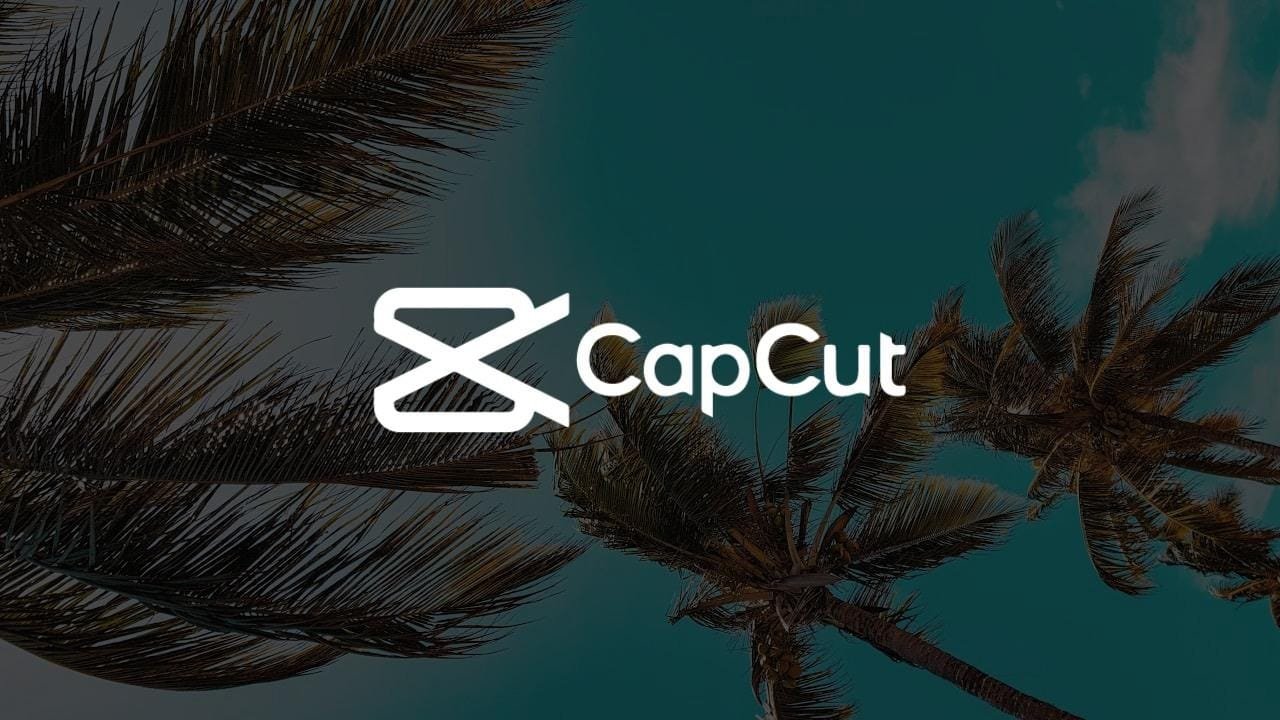 Now, let’s talk about CapCut, because this one stings on a personal level. CapCut wasn’t just for TikTok creators—it was for every creator. YouTube Shorts, Instagram Reels, Snapchat Spotlight—it didn’t matter where you posted your content, CapCut was the tool. It made professional-grade video editing stupid easy and, get this, completely free. Need captions? Done. Want smooth transitions? Handled. It was a Swiss Army knife for content creators, and now it’s gone. Like, why? What did CapCut even do?
Now, let’s talk about CapCut, because this one stings on a personal level. CapCut wasn’t just for TikTok creators—it was for every creator. YouTube Shorts, Instagram Reels, Snapchat Spotlight—it didn’t matter where you posted your content, CapCut was the tool. It made professional-grade video editing stupid easy and, get this, completely free. Need captions? Done. Want smooth transitions? Handled. It was a Swiss Army knife for content creators, and now it’s gone. Like, why? What did CapCut even do?
Here’s where it gets messy: CapCut didn’t deserve this. It wasn’t spreading news or fueling movements; it was just an editing tool. Sure, it was owned by ByteDance, and sure, it had integration with TikTok, but so what? People weren’t editing videos thinking, “Oh no, the Chinese government might know I just added a glitch effect to my latest dance clip.” It was just good tech, and now it’s banned because of fear and politics.
What really hurts is how much small creators and businesses relied on CapCut. Not everyone has the budget for expensive editing software like Adobe Premiere or Final Cut Pro. CapCut was accessible, powerful, and intuitive. It leveled the playing field, letting people with zero experience create content that looked like it was made in a pro studio. And now? We’re back to scrambling for replacements that just don’t hit the same.
Why Were They Included in the Ban?
So, why did Lemon8 and CapCut get dragged into this mess? Simple: ByteDance’s ecosystem. Governments don’t just see individual apps—they see the whole company. ByteDance owns TikTok, Lemon8, and CapCut, and in the eyes of regulators, that means they’re all part of the same “dangerous” data pipeline. It doesn’t matter if Lemon8 was just sharing travel tips or if CapCut was only splicing together someone’s dog videos—if ByteDance owns it, it’s a target.
It’s like they’re saying, “If we can’t trust TikTok, we can’t trust anything ByteDance touches.” And that’s the real kicker—it’s not about what these apps do; it’s about who owns them. ByteDance is essentially being punished for its success, and Lemon8 and CapCut got caught in the fallout.
The Real Impact
This isn’t just a ByteDance problem—it’s a creator problem. Losing Lemon8 and CapCut means losing tools and opportunities. Lemon8 could’ve been a game-changer for influencers and niche content creators looking for something new. CapCut was already a must-have for anyone making short-form content, no matter the platform. And now, we’re left scrambling for replacements that don’t quite measure up.
Let’s call it what it is: collateral damage. Lemon8 and CapCut weren’t threats—they were just convenient targets in a much bigger game of geopolitical chess. And for creators? It’s a huge loss, plain and simple. But, like always, we adapt. We’ll find new tools, new platforms, and new ways to keep creating. The game isn’t over yet—it’s just changing. Stay tuned, because next up, we’re talking about the true cost of losing TikTok, CapCut, and Lemon8, and trust me, it’s deeper than you think.
The True Cost of the Ban
Alright, let’s talk about what we’ve actually lost here—because it’s not just a few apps disappearing from your phone. This TikTok ban (and the takedown of Lemon8 and CapCut) comes with huge ripple effects that go way beyond losing a space to scroll when you’re bored. We’re talking about a cultural, economic, and informational blackout. This is bigger than just losing dance trends and funny skits—it’s about creativity, careers, connection, and control. Let’s dive into it.
1. Billions of Videos, Gone
Think about this: TikTok had over a billion active users worldwide, and those users were creating millions of videos every day. Multiply that by almost 9 years of TikTok being around, and you’ve got a digital treasure chest of creativity that’s now locked away—or worse, deleted forever.
This wasn’t just cat videos or lip-syncing challenges (though, shoutout to those—they were golden). TikTok was art. It was activism. It was education. People shared their talents, their struggles, their humor, and their stories. It wasn’t curated perfection like Instagram or high-production like YouTube; it was real. And now, it’s gone.
Do you know what that feels like? It’s like someone burned down the modern-day Library of Alexandria—but instead of books, it’s our collective creativity, our culture, and our memories.
2. A Whole Creator Economy, Disrupted
TikTok wasn’t just a fun app—it was a money-making machine. For millions of people, TikTok was their livelihood. And I’m not just talking about the Charli D’Amelios and Khaby Lames of the world pulling in millions of dollars. I’m talking about regular people—your neighbor who started selling handmade jewelry, your friend who turned their passion for fitness into a side hustle, or the small-town bakery that used TikTok to blow up and go viral.
- Creators Made Bank: TikTok’s Creator Fund paid out billions, and brand deals on TikTok were some of the most lucrative in the influencer space.
- Small Businesses Thrived: TikTok was the place to go viral overnight. You could post one video, and suddenly, people from across the country (or world) were buying your product. Now? That pipeline is gone.
- Freelancers Took a Hit: Videographers, editors, social media managers—so many people made a living helping TikTok creators level up their game. And now, their work is drying up too.
Let’s not sugarcoat it: jobs are being lost. Dreams are being crushed. The creator economy that TikTok fueled is now scrambling to survive.
3. Peer-to-Peer News, Silenced
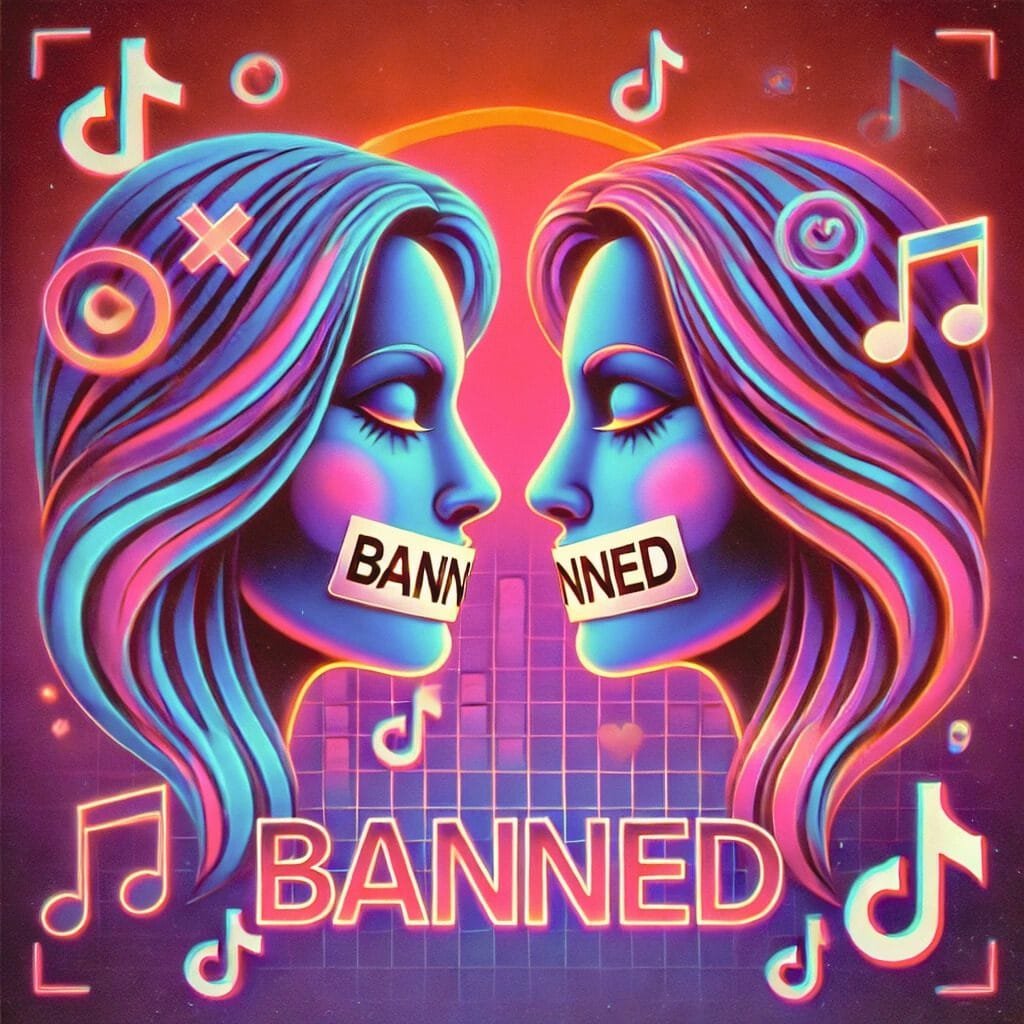 This is the one that hits the hardest for me. TikTok wasn’t just about entertainment—it was a news outlet for the people, by the people. When something happened in the world, you didn’t need to wait for polished, corporate-owned media outlets to give you their filtered version of the story. TikTok was raw, real, and immediate.
This is the one that hits the hardest for me. TikTok wasn’t just about entertainment—it was a news outlet for the people, by the people. When something happened in the world, you didn’t need to wait for polished, corporate-owned media outlets to give you their filtered version of the story. TikTok was raw, real, and immediate.
- Breaking News in Real Time: Think about the Ukraine war, where soldiers and civilians used TikTok to document what was happening on the ground. Or the protests in Iran, where TikTok bypassed government censorship and showed the world what people were fighting for.
- Accountability: TikTok held people in power accountable. It was harder to hide corruption or injustice when someone with a smartphone could film it, post it, and have it seen by millions within hours.
With TikTok gone, that instant, unfiltered flow of information is gone too. Platforms like Instagram and Facebook just don’t have the same reach or vibe—they’re too polished, too slow, too curated. TikTok was different. It gave the power to the people, and now, that power is being taken away.
4. Loss of Community and Connection
One of the most underrated things about TikTok was its ability to build communities. No matter how niche your interest was—roller skating, pottery, 90s punk music—there was a corner of TikTok where you could find your people. And those connections? They were real.
For a lot of people, TikTok wasn’t just a distraction—it was a lifeline. It was where they felt seen, heard, and understood. Losing that space isn’t just inconvenient—it’s isolating. It’s a reminder that even in the digital age, the spaces we rely on can be taken from us in an instant.
5. What This Means for Culture
TikTok wasn’t just reflecting culture—it was creating it. Trends, movements, memes—all of it started there and spread everywhere else. TikTok was the engine driving so much of what we see on Instagram, Twitter, and even YouTube. Now that engine’s been shut down, and we’re left wondering: what happens to culture now?
This isn’t just about losing a platform; it’s about losing a space where culture thrived, grew, and evolved in ways that felt organic and unpredictable. Without TikTok, the internet feels a little less exciting, a little less alive.
The Bottom Line
The cost of this ban is massive. It’s not just about apps—it’s about people, creativity, and power. It’s about the creators who’ve lost their stage, the small businesses that have lost their customers, and the communities that have lost their gathering place. It’s about silencing a platform that gave us control of the narrative. And now that it’s gone, the internet feels a little emptier.
But creators? We’re resilient. This isn’t the first time we’ve lost a platform (RIP Vine), and it won’t be the last. We’ll adapt, pivot, and find new ways to create and connect. But let’s not pretend this isn’t a massive loss, because it is. And the worst part? It didn’t have to be this way. But here we are.
What Alternatives Exist?
So TikTok’s gone, CapCut’s out of the picture, and Lemon8? Well, it never even got its day in the sun. Now what? If you’re sitting here, scrolling through apps, wondering where to post your content or how to edit your next short-form masterpiece, you’re not alone. Let’s break down the alternatives, what they offer, and if they even stand a chance of filling the gaping hole TikTok (and its ecosystem) left behind.
TikTok Alternatives: The New Playing Field
There are a few apps vying for TikTok’s crown, but let’s be honest—it’s like trying to replace your favorite local burger joint with fast food. Sure, the other options will work, but they don’t hit the same. Here’s what we’ve got:
- Instagram Reels
- The Vibes: Reels is Instagram’s attempt to grab TikTok’s audience. It’s integrated right into the app, so if you’re already on Instagram, it’s easy to start posting short-form content.
- The Good Stuff: Big user base, solid engagement, and a well-established ad system for creators looking to monetize. Plus, Reels tie directly into your main feed and Stories, making it a one-stop shop for all your content needs.
- The Bad Stuff: Reels feels too polished. TikTok was raw, chaotic, and unfiltered—Reels, on the other hand, feels like it’s trying to impress your parents. The algorithm doesn’t match TikTok’s ability to hook you and keep you scrolling.
- Verdict: Good for creators already established on Instagram, but it’s not replacing TikTok’s unique vibe anytime soon.
- YouTube Shorts
- The Vibes: YouTube’s response to TikTok is baked right into their platform. It’s vertical video, short and snappy, designed to compete head-on with TikTok.
- The Good Stuff: Shorts tie directly into your YouTube channel, meaning you can grow your audience across both short and long-form content. And let’s not forget—YouTube pays creators better than almost any other platform.
- The Bad Stuff: The Shorts algorithm isn’t as refined as TikTok’s, and YouTube’s audience still leans toward long-form content. Shorts feels like an add-on, not the main event.
- Verdict: Great for creators already on YouTube or those looking to monetize content seriously, but it lacks TikTok’s community-driven feel.
- Snapchat Spotlight
- The Vibes: Low-key underrated, Snapchat Spotlight is essentially TikTok buried within Snapchat’s ecosystem. It’s a space for short-form content with monetization opportunities baked in.
- The Good Stuff: Snapchat pays creators well, and because it’s not as saturated as TikTok or Instagram, it’s easier to stand out.
- The Bad Stuff: Snapchat doesn’t have the same global cultural pull as TikTok. Plus, the app feels more like a messaging platform than a content-sharing hub.
- Verdict: Worth a shot for creators looking for something fresh, but don’t expect it to replace TikTok.
- Clapper
- The Vibes: Clapper is like TikTok’s rebellious little cousin. It’s focused on freedom of speech and creator-driven content, with fewer restrictions and algorithms interfering with what you post.
- The Good Stuff: It feels like a throwback to TikTok’s early days—raw, unpolished, and community-driven.
- The Bad Stuff: Smaller user base, which means less reach and fewer opportunities to go viral. It’s also not as polished as TikTok.
- Verdict: Great for niche creators or those wanting to embrace the grassroots vibe, but it’s not mainstream yet.
- Triller
- The Vibes: Triller was hyped as a TikTok competitor back in the day, but let’s be honest—it’s never quite taken off. It’s music-focused and backed by celebrities like The Weeknd and Snoop Dogg.
- The Good Stuff: Strong connections to the music industry, making it a solid platform for musicians and performers.
- The Bad Stuff: Clunky interface, lower user engagement, and nowhere near the reach TikTok had.
- Verdict: If you’re a musician, maybe. If you’re anyone else? Meh.
CapCut Alternatives: Replacing the Creator’s Toolbox
Losing CapCut is like losing the Swiss Army knife of mobile video editing. But there are a few apps out there trying to fill its shoes:
- VN Video Editor
- Why It’s Good: VN feels like CapCut’s twin. It’s free, packed with pro-level features, and easy to use. You’ve got keyframes, transitions, audio syncing—the works.
- The Downside: It’s not quite as intuitive as CapCut, and the trendy templates are missing.
- Verdict: The best CapCut replacement, hands down.
- InShot
- Why It’s Good: Super simple to use, InShot is perfect for quick edits. Trim, cut, add filters, and throw in some text—it’s great for creators who want something fast and easy.
- The Downside: It’s not as powerful as CapCut. You won’t get the same advanced tools or AI-powered features.
- Verdict: Perfect for beginners, but pros will miss CapCut’s depth.
- Adobe Premiere Rush
- Why It’s Good: A lighter, mobile-friendly version of Adobe Premiere Pro. It’s polished, reliable, and integrates well with the Adobe ecosystem.
- The Downside: It’s not free, and the learning curve is steeper than CapCut or VN.
- Verdict: Great for serious creators, but not for the casual crowd.
- Alight Motion
- Why It’s Good: This app takes mobile video editing to the next level with motion graphics, keyframes, and advanced effects.
- The Downside: It’s not beginner-friendly, and it takes time to master.
- Verdict: Amazing for advanced creators, but it’s not a direct CapCut replacement.
Lemon8 Alternatives: The Aesthetic Void
RIP Lemon8, we hardly knew ye. For creators who were hyped about its Pinterest-meets-Instagram vibes, here are your best bets:
- Pinterest
- Why It’s Good: The OG mood board app is still alive and kicking. It’s great for visual inspiration and niche content.
- The Downside: Pinterest doesn’t have the same social community vibe that Lemon8 was going for.
- Verdict: A solid alternative for inspiration, but not interaction.
- Instagram Guides and Posts
- Why It’s Good: Instagram Guides let you curate content in a blog-like format, which is similar to what Lemon8 was doing.
- The Downside: Instagram’s algorithm makes it harder for new creators to gain traction without spending money on ads.
- Verdict: If you’re already on Instagram, lean into Guides. It’s not perfect, but it’s something.
Do They Measure Up?
Let’s keep it real: none of these alternatives are the replacement for TikTok, CapCut, or Lemon8. They’ll help you get by, sure, but they don’t hit the same. TikTok’s algorithm was one of a kind, CapCut made content creation effortless, and Lemon8 had the potential to carve out a new niche. These alternatives might be stepping stones, but they’re not filling the void.
The big takeaway? Adaptation is key. Creators have always been scrappy, and we’ll figure out how to thrive in this post-TikTok world. But let’s not pretend the alternatives are perfect—they’re not. They’re just the best we’ve got for now. So pick your platform, sharpen your skills, and let’s figure out how to keep moving forward. The game isn’t over—it’s just changing.
Final Thoughts: The Next Chapter for Creators
Alright, so here we are. TikTok’s gone. CapCut and Lemon8 went with it. And now, we’re left standing in the ashes of what feels like a massive cultural reset. It’s not just an app or a few tools that got taken away—it’s the ecosystem, the creativity, the livelihoods, and the power we built on those platforms. Losing TikTok isn’t just inconvenient; it’s personal. It’s the loss of a space where anyone—literally anyone—could be heard, could connect, and could create something meaningful. And yeah, it hurts.
But here’s the thing: this isn’t the end of the story. If TikTok taught us anything, it’s that creators are unstoppable. We’ve seen this before—remember Vine? When Vine shut down, it felt like the end of the world for short-form creators. But out of those ashes came TikTok, and it didn’t just fill the gap; it redefined the game. The same thing will happen here. Maybe it won’t look like TikTok, maybe it’ll take some time, but you can bet something new will rise. It always does.
What’s Next for Us?
Here’s the deal: you’ve got two choices. You can sit and sulk (trust me, I get it—it’s tempting), or you can adapt, pivot, and figure out how to own your content moving forward. Because if this ban taught us anything, it’s that putting all your eggs in one platform’s basket is a risky game. So, what’s the next move?
- Diversify Your Platforms: Don’t rely on one app ever again. If you’re a creator, get on YouTube Shorts, Reels, Snapchat Spotlight—hell, even Clapper if it works for you. Spread your content across multiple platforms so you’re not at the mercy of one ban or algorithm change.
- Own Your Audience: Start building assets that you control—your own website, an email list, maybe even a subscription platform like Patreon. TikTok was great, but it wasn’t yours. Don’t let that happen again.
- Experiment and Stay Scrappy: Creators thrive on adaptability. This is the time to experiment, try new tools, and even test new formats. Yeah, the alternatives aren’t perfect, but they’re stepping stones. Use them. Build with them.
This Is Bigger Than an App
Let’s not sugarcoat it: this ban wasn’t just about TikTok being “spyware.” It’s about control—control of data, technology, narratives, and ultimately, power. TikTok wasn’t just an app; it was a cultural force that disrupted everything. It gave the average person a platform that could rival corporations and governments. That’s what made it dangerous. And honestly? That’s why it was so powerful.
But here’s the silver lining: that kind of cultural disruption doesn’t just disappear. TikTok might be gone, but the energy, the creativity, the movement it started? That’s still here. It’s in every creator, every small business owner, every person who’s ever picked up a phone and thought, “I’ve got something to share.” You don’t need TikTok to keep doing that. You just need to stay hungry and keep creating.
Let’s Keep Building
So yeah, this sucks. It’s frustrating, it feels unfair, and it’s a massive loss. But if there’s one thing I know about creators, it’s that we don’t give up. We’ve built entire movements from scratch before, and we’ll do it again. The platforms might change, the tools might look different, but the creativity? That’s all us.
This isn’t the end—it’s just the start of a new chapter. So let’s adapt, let’s pivot, and let’s figure out how to make this next wave even better than the last. Because if TikTok proved one thing, it’s that we’re capable of incredible things when we’ve got the tools and the platform. Now it’s time to build the next one.
What’s your move? Where are you taking your content? Let’s talk, let’s plan, and let’s make sure that no matter what happens next, we’re ready to keep evolving. Because no one can cancel our creativity. Let’s go. 